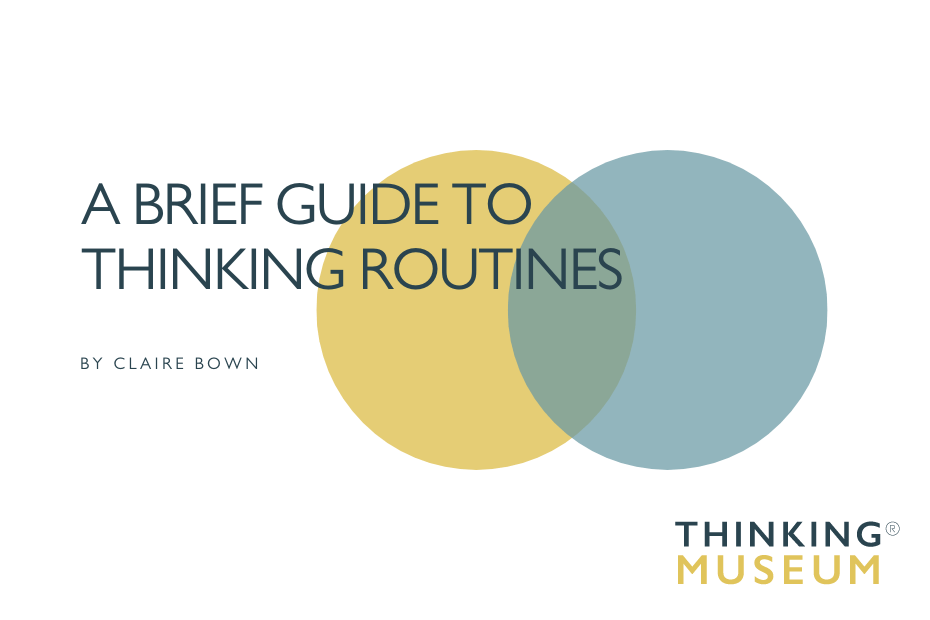Interested in using Project Zero thinking routines as a questioning framework to structure and support your art and object discusions? Not quite sure where to start? Here is my brief guide:
In 2011, I spent a year developing a new programme at the Tropenmuseum using thinking routines from Project Zero’s Visible Thinking as a way of engaging and interacting with museum objects. The resulting programme Stories Around the World used these questioning frameworks as the structure around which participants explored objects in the museum in a slow, careful and detailed way.
What are thinking routines?
Thinking routines are tools specifically designed to help, support and guide mental processes or thinking developed by researchers at Harvard’s Project Zero.
Originally developed for use in the classroom, they consist of short, easy to learn and teach steps that get used in a regular fashion. With habitual use, educators and participants are able to cue the steps of the routine themselves. They have catchy and appealing names too – See Think Wonder or Think Puzzle Explore – to help learn them by heart and recall them independently when required.
Thinking routines are typically short and memorable with only a few steps based on carefully crafted questions – ‘What do you see?’ ‘What do you think about that?’ ‘What does it make you wonder?’. In the museum, questioning frameworks, such as thinking routines can loosely guide and support inquiry-driven discussions around a wide variety of materials such as artworks, photographs, documents, newspaper articles, historical objects and so on.
Where can you use them?
Thinking routines can be used across a variety of contexts and environments from schools, universities, private institutions and corporations and, of course, museums, heritage and cultural organisations. They are also not subject-specific either – thinking routines have a wide appeal and application across a variety of disciplines including arts, history, maths and science contexts. Their flexibility means that they can be used on an individual as well as a group basis.
How many are there?
There are currently 100+ thinking routines developed by Project Zero. Visit the PZ Thinking Routine Toolbox to look at the list (although not all thinking routines are listed here). Many thinking routines are in the two Visible Thinking books – Making Thinking Visible and The Power of Making Thinking Visible – although there are thinking routines that are from Artful Thinking, Agency by Design, Out of Eden Learn PZ projects, amongst others too.
Each thinking routine encourages certain types of thinking and the name of the routine helps to guide the participant as to the type of thinking required – for example, observing closely and describing, reasoning with evidence, making connections, perspective taking etc.
For our purposes in the museum, it is first important to establish the desired outcome of your discussion and then choose the correct thinking routine for that task.
One of the many powers of thinking routines is their flexibility – with such a wide variety of routines to choose from, you can vary the way you work depending on the goals of your programme, the group you’re with or the object you’re discussing.
There are also many questioning frameworks, strategies or protocols that have been developed by teachers, researchers and museum educators that you can also use to guide and support inquiry-led discussions in the museum environment.
Sign up for my Curated newsletter
Every other Friday I share a small dose of curated inspiration. It might be things I’ve read, things I’ve listened to or things I’ve watched.
Hear about my latest podcast episode and read useful tips, recommendations and things that I love. Join via the button below.

Pingback: Teenage Kicks at the Stedelijk | thinking museum
Pingback: For the Joy of Learning: Adults, Museums and Thinking Routines
Pingback: What is Slow Looking? (and How Can I Get Started?)
Pingback: 3 Key Ways to Foster Curiosity in your Programmes
Comments are closed.